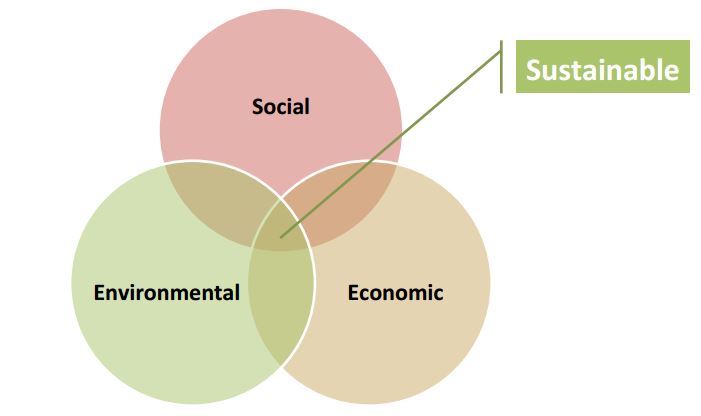
Typhoon Haiyan has literally stripped the Philippines of its assets – largely its infrastructure, to be exact. Natural hazards cost the country $1.6 billion annually. [1] HSBC economist Trinh Nguyen identifies infrastructure investment as urgent and crucial – a critical activity in terms of the urgency/importance matrix.
“They get through the storms and rebuild if they have to. But this is not sustainable in the long run,” says Toby Monsod, an economics professor at the University of the Philippines in Manila. [2] Sustainable is the key word here. Typhoon Haiyan cannot simply be viewed as a natural disaster; it is a catastrophe that affects all three aspects – environmental, social, and financial – of the country’s triple bottom line.

Sustainability as the Triple Bottom Line (Lecture 15: CSR & Sustainability)
Environmentally, the damages caused by the typhoon are evident. Socially, past government corruption resulted in a lack of proper concern for the safety of citizens’ shelter. Financially, the Philippines’ National Economic and Development Authority forecast up to 4.1% decrease in national economic growth in the fourth quarter, with negative impacts carrying over to year 2014 due to reduced production capacity. [3]
A country operates like a business, and the Philippines must invest in its assets to maintain sustainability.
——–
[1]”Typhoon Highlights Weak Philippine Infrastructure.”
[2]”Why Wasn’t the Philippines Better Prepared for the Typhoon? Corruption, Shoddy Buildings to Blame.”
[3]”Typhoon Haiyan: Philippines Reflects on Traumatic Week.”
Works Cited
Chan, Kelvin, and Teresa Cerojano. “Typhoon Highlights Weak Philippine Infrastructure.”Yahoo Finance. Yahoo, 12 Nov. 2013. Web. 14 Nov. 2013.
COMM 101 Lecture 15: CSR & Sustainability
Landingin, Roel. “Typhoon Haiyan: Philippines Reflects on Traumatic Week.” Financial Times. The Financial Times Ltd., 13 Nov. 2013. Web. 14 Nov. 2013.
Maceda, Jim. “Why Wasn’t the Philippines Better Prepared for the Typhoon? Corruption, Shoddy Buildings to Blame.” World News. NBC News, 14 Nov. 2013. Web. 14 Nov. 2013.
Recent Comments